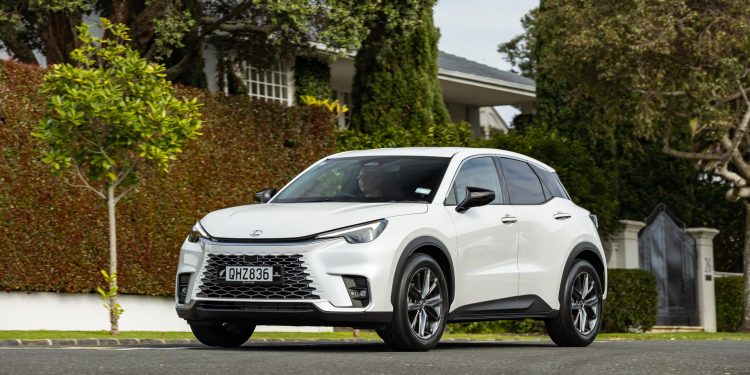2024 Lexus LBX Relax review
Words: Peter Louisson | Photos: Isaac Western
Behold the smallest entrant yet from Lexus. It may not be that quick or roomy but when it looks this good, that’s enough.
Lexus timed the introduction of its latest newbie well, the anonymously named LBX (Lexus Breakthrough Crossover) its cheapest model yet, kicking off at $58,900.
It is based on the mechanicals of the Toyota Yaris Cross light SUV that starts out at under $40k. So you can cheap out if you want but the Yaris Cross can’t match this for first impressions, nor does it get the specification of the Lexus littl’un.
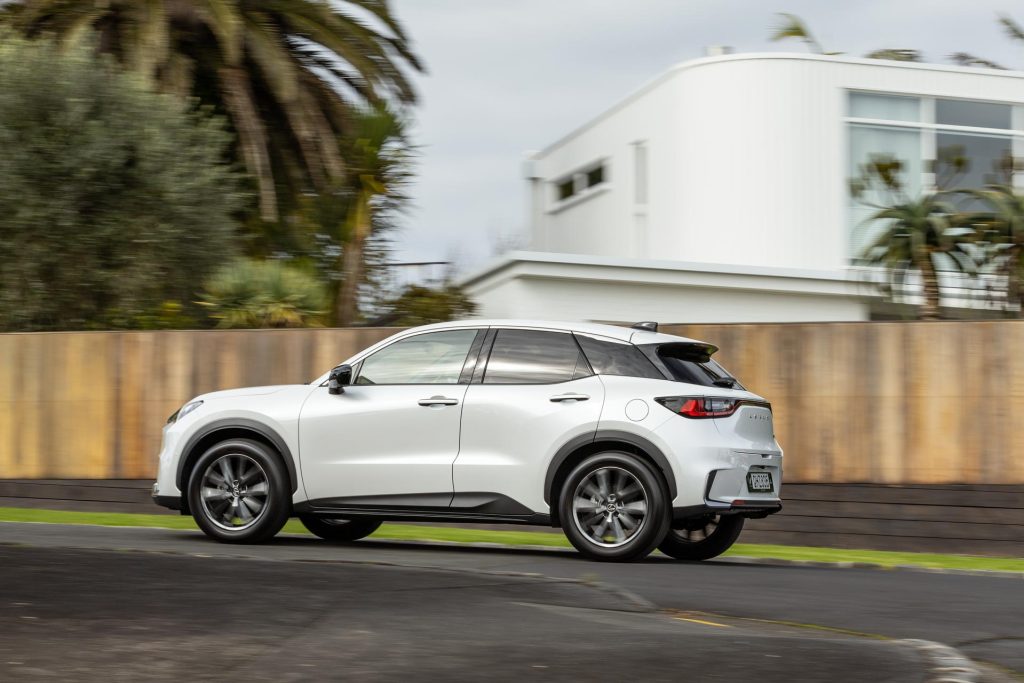
However, you do pay for the privilege, as mentioned, and the sub-$60k number is just the start point. More expensive models have added spec. And they also come with AWD if you want.
We’d expect a little extra zing in the from of the rear-mounted motor that adds 4.7kW and 52Nm to the arena. Oddly enough, it evidently doesn’t aid either economy or performance.
Figure on $3000 extra for having the security of all wheels driving.
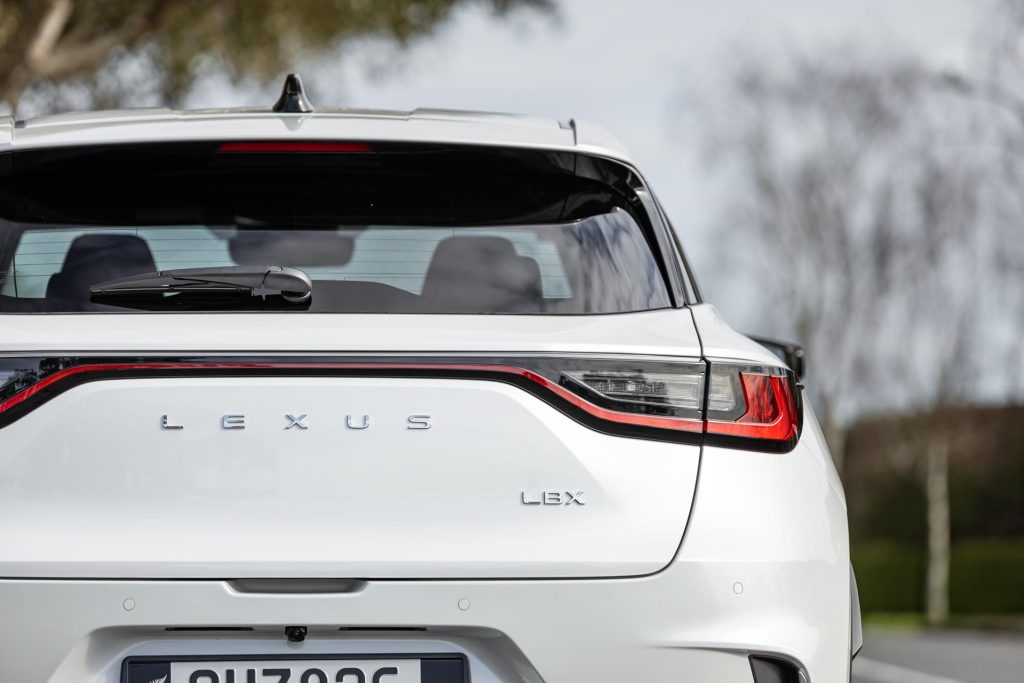
What’s also a bit different for this particular model is that Lexus is marketing it in three (what it calls) ‘moods’. There’s the entry-level LBX Active at $58,900, followed by the Cool and Relax, both of which retail for $65,900.
Naturally, these get a bit more in the way of interior fitout, with items like artificial leather interiors (our’s in a quite fetching dark tan colour), head-up display, auto-dipping lights, and motorised seats.
There are also different alloys, two-tone exteriors, and the real icing on the cake (to my mind) is the 13-speaker Mark Levinson surround sound stereo system. We reckon it is almost worth the uptick for this alone, if you value clear, rich, dynamic sounds.
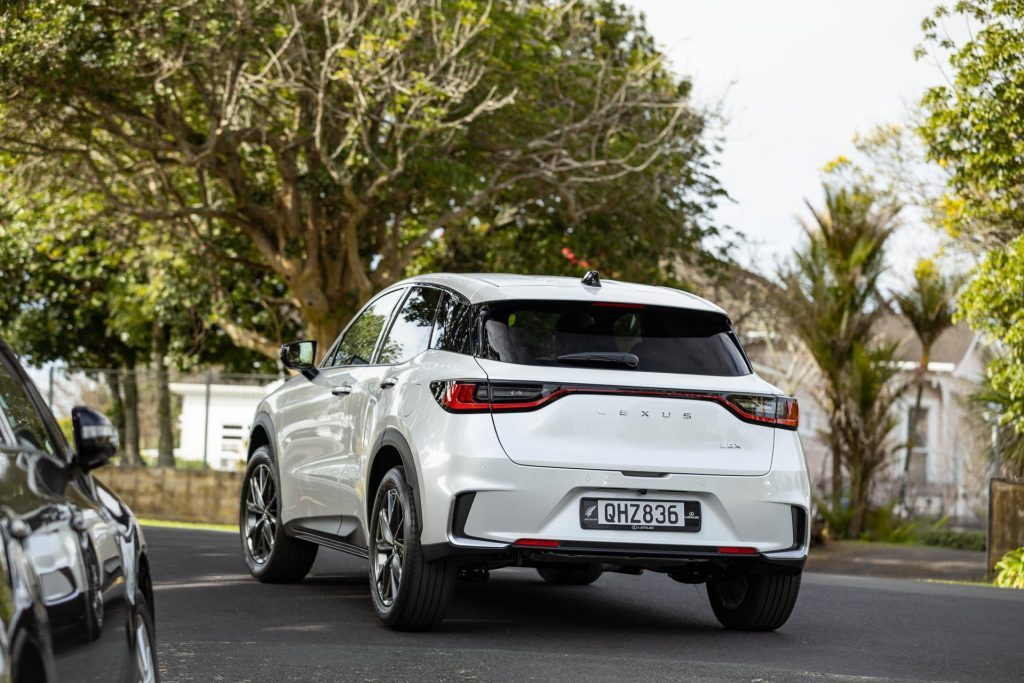
The other extras are nice but not in the same quality league as the premium sound system. Self parking is another extra, but it’s something you’d hardly ever resort to using in a vehicle that’s under 4.2m long.
And the rest you don’t exactly need. But if you want really great in-car sound, for sure opt for Cool or Relax.
Whether or not AWD is worthwhile is harder to say without driving it. The front driver does do pretty darn well on its own.
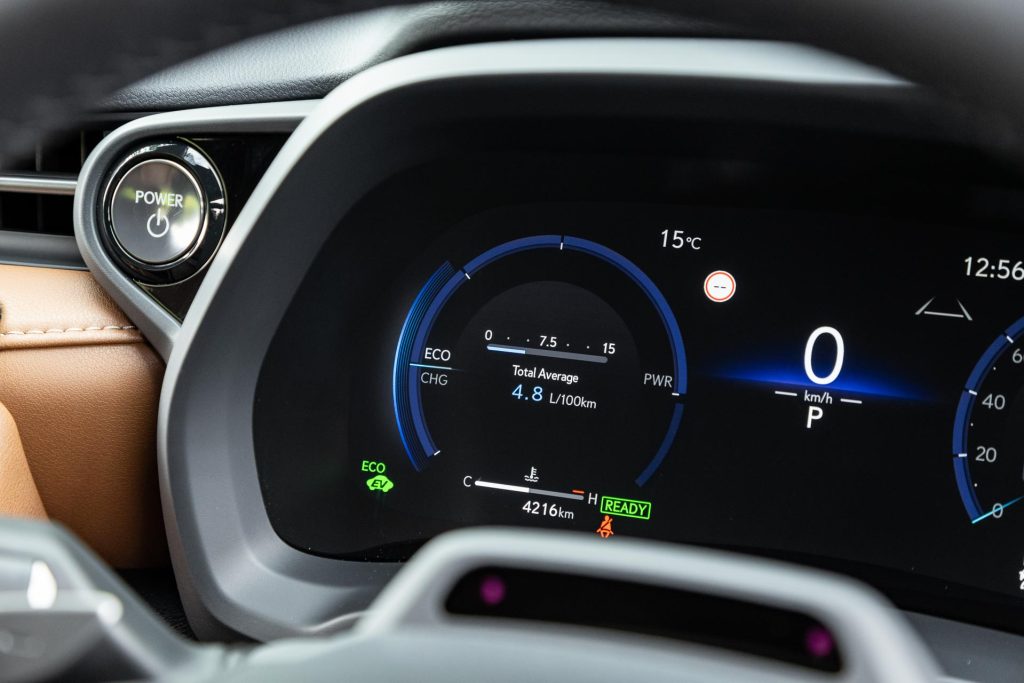
Betty Davis Eyes
Without question, this is a smart looker and Lexus is targeting young urbanauts. We like the black contrast on the B and C pillars, the racy lights and the sizeable tyres too.
However, the non-pull exterior door handles don’t quite do it for me. And why does it take so many stabs of the wheel-mounted ACC controls to get any actual action on the speed front?
One other minor issue is the size of the reversing image; a nine-inch screen doesn’t give the flashest view, though the surround camera is a nice addition in the higher level models. Most of these likely relate back to its Toyota origins.
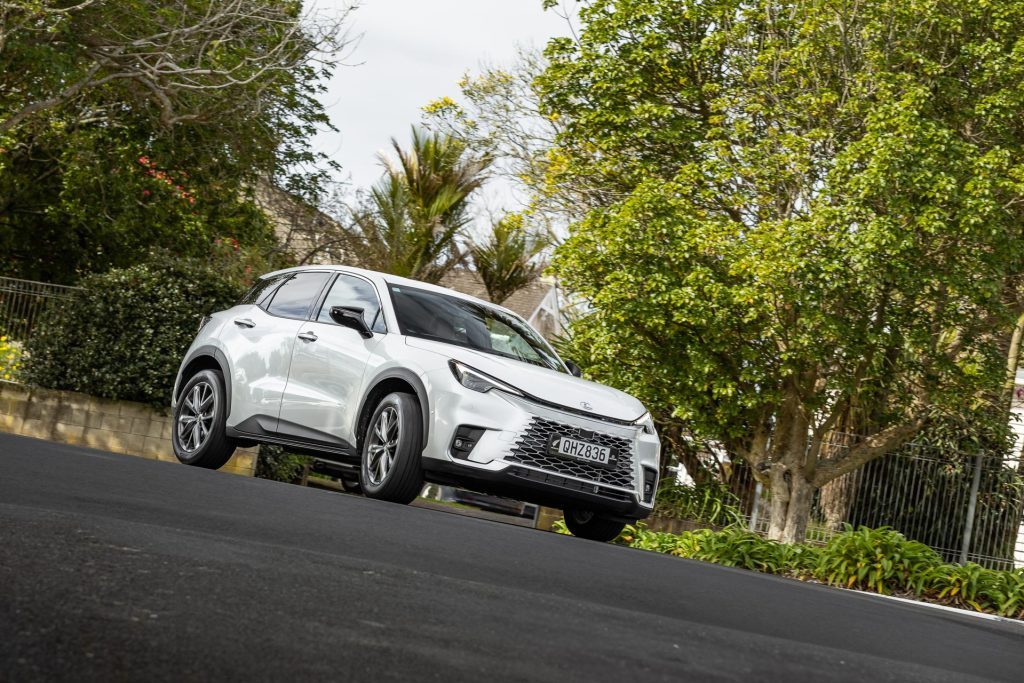
The interior is nicely finished, with a stitched leather look on the upper dash, though how well the artificial leather upholstery lasts is anyone’s guess.
There were already some scratch marks on the driver’s seat squab.
Not exactly roomy back there
Being less than 4.2m, something’s gotta give and in this vehicle it is rear seat legroom. If a taller adult is driving, the rear seat occupant will necessarily be tiny or canine.
We like that the driver’s seat moves in and out to facilitate entry and egress on our particular variant and there’s a good driving position too. Plus, the pleather does look pretty cool, and it’s not often I feel that about tan colours.
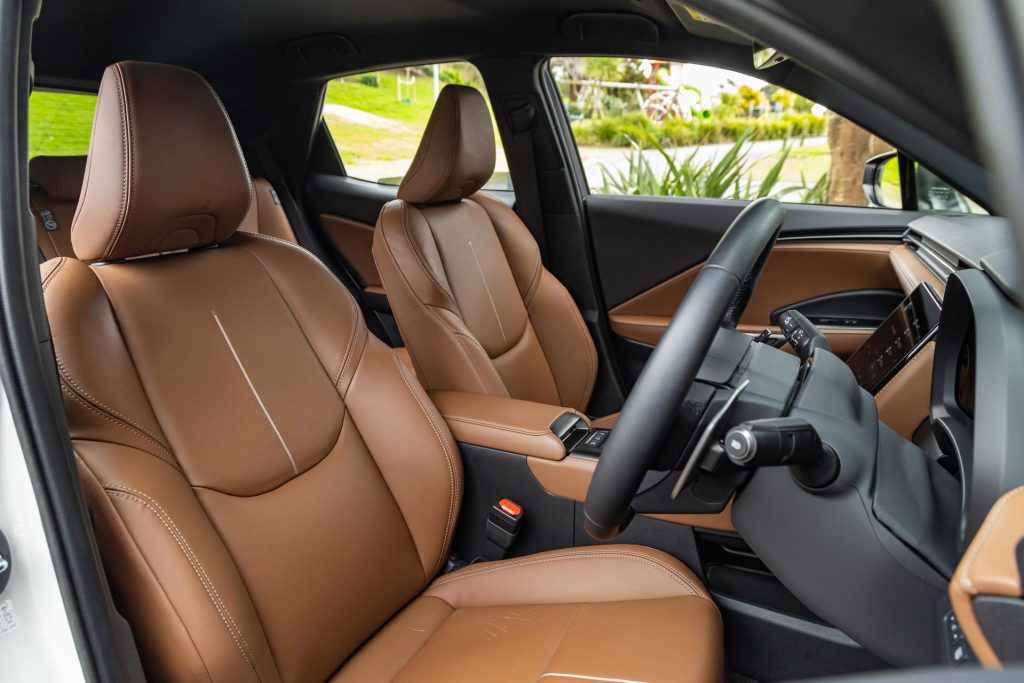
Moving right to the rear and there’s a takes-its-time powered hatch on offer with an okay amount of room beneath. We had an errand to do and a couple of sizeable boxes fitted perfectly in the back, such that they wouldn’t have moved no matter how the car was driven.
The Lexus antislip mat for the boot floor is genius in how it keeps everything locked in place. There’s 402L of luggage space in the non-AWD models or what we’d call the front drivers.
However, moving to all-paw status involves a change from torsion beam to double-wishbone suspension out back. While that might improve ride quality marginally it also delivers less luggage space, falling to 315L.
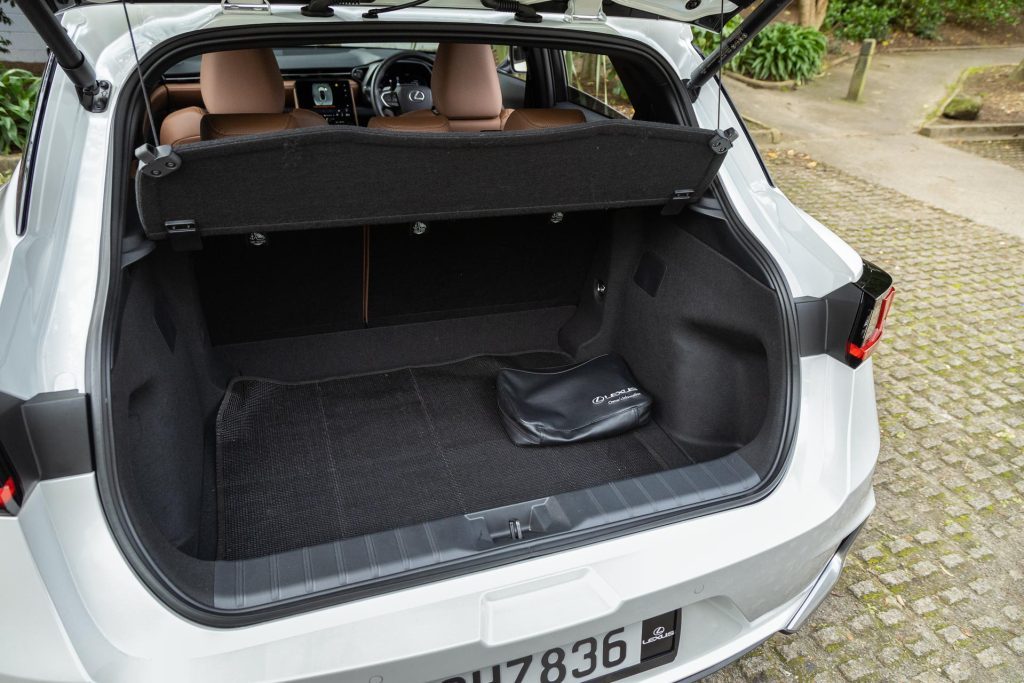
So that’s another thing you need to consider if you decide to spend $3k on going all-paw. Turning down the rear seat backs leads to a dual-level load space that optimally swallows 994L, about 100 less for the AWD model.
Great fuel use potential
Folks who want a little luxury in a compact vehicle are often chasing fuel economy as well. Retirees will no doubt appreciate how abstemious this is.
When we jumped aboard the long term average was 5.0L/100km and it never really shifted from that; we returned it with 4.9L/100km showing. But our use was almost entirely out of town.
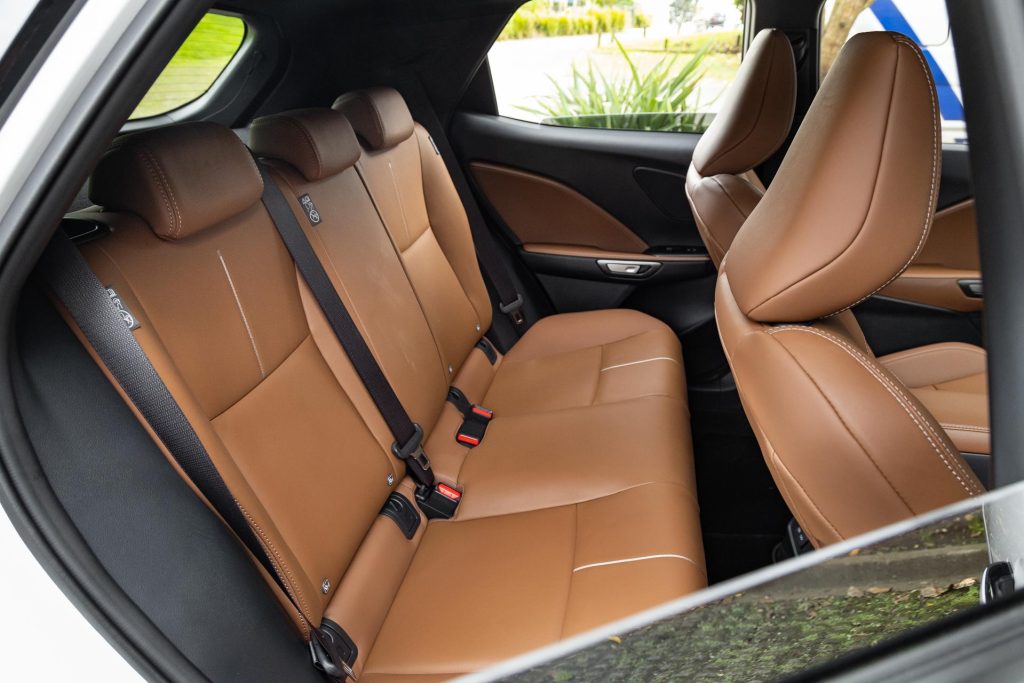
I bet it could imbibe significantly less in town. Lexus reckons on 3.6L/100km overall.
This type of self-charging hybrid performs best in stop-start slow-speed travel. On the open road, we just watched the fuel use meter slowly creep up until it was registering around 6.0L/100km at a constant 100-110 (some of it was on the Expressway).
About the only possibility of pegging back some fuel use is when you hit downhill stretches and the engine can turn off while regen quietly refills the small NiMH battery.
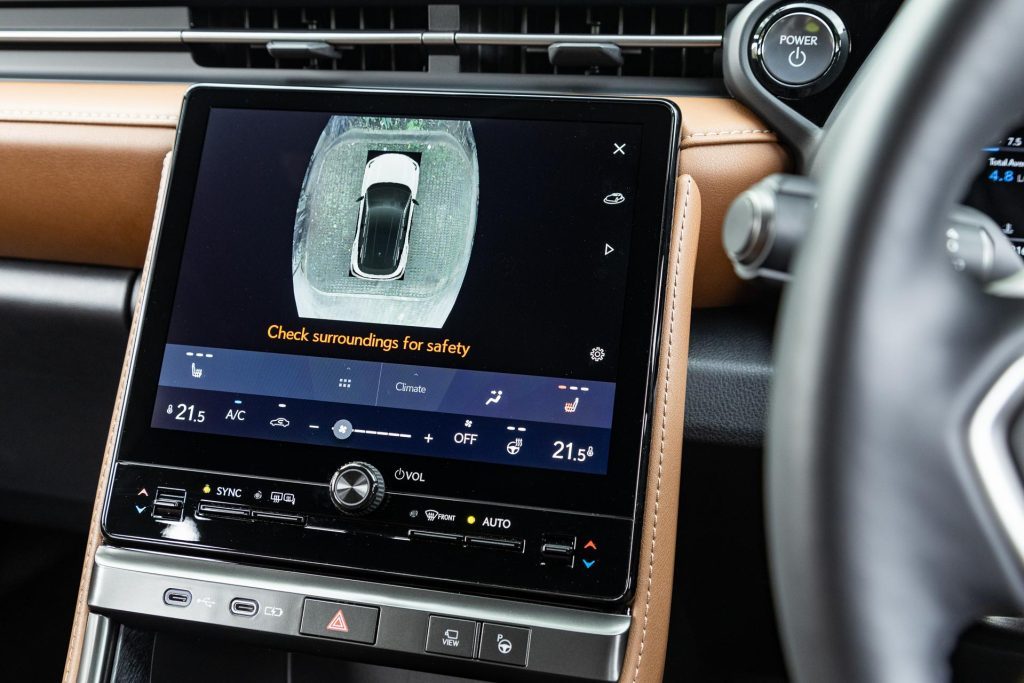
It would take a fair stretch of sustained stop and start big city motoring to get the fuel use down to below 4.0 we’d imagine. Not impossible but certainly not if you use the vehicle as we did.
Because it has such a small tank, around 36L it doesn’t cost much to refill. We hit the 100km remaining mark, spent $40 and that took the tank back up to around two-thirds.
Quite gratifying when most cars require well over $100 for a refill.
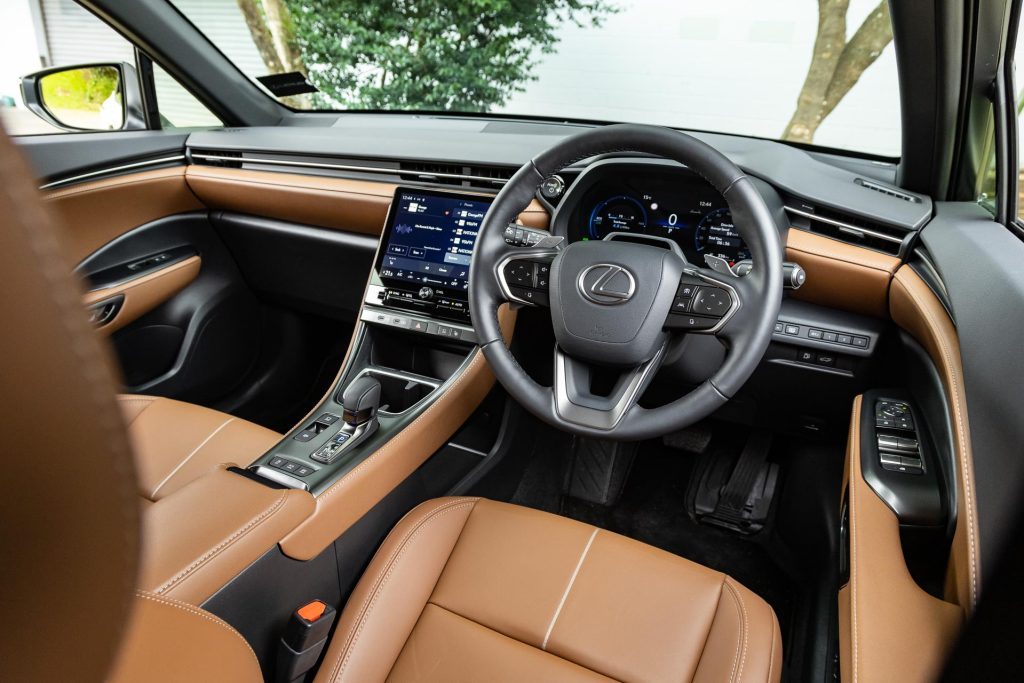
Hardly quick but not the point
It isn’t that quick but then you’d not expect it to be with a 67kW/120Nm 1.5L three-pot engine under the bonnet. It works in conjunction with a 69kW/185Nm motor. System output is 100kW but torque isn’t stated.
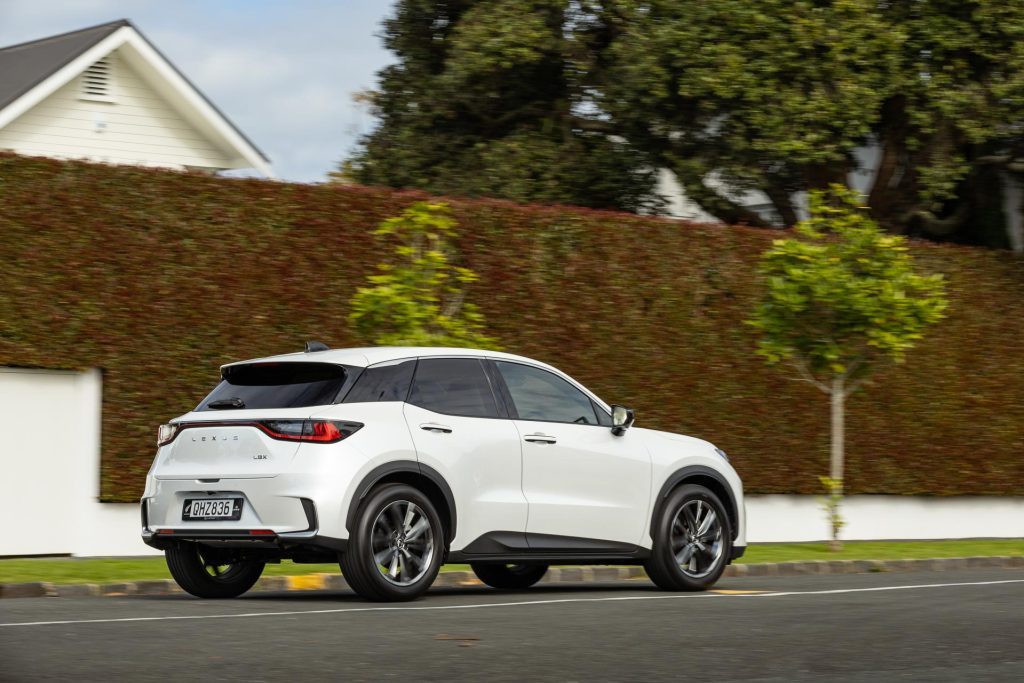
That’s not much but it seems to go okay when you give it a nudge, the wee ‘Dynamic Force’ engine and electric motor working together well enough. It’s only when you put the timer on it that the thrum of the triple deceives you a little as to how fast it’s actually going.
We couldn’t quite meet the 9.2sec claim but were only a tick behind it, while an overtake requires about seven seconds. That said, this did everything I asked of it during my time and its primary directive is thrifty town running.
In the wilds however, never once did it feel like a laggard. But then most of the time we were aiming for economy rather than speed. It’s just the open road isn’t the best place to be aiming for that with this vehicle.
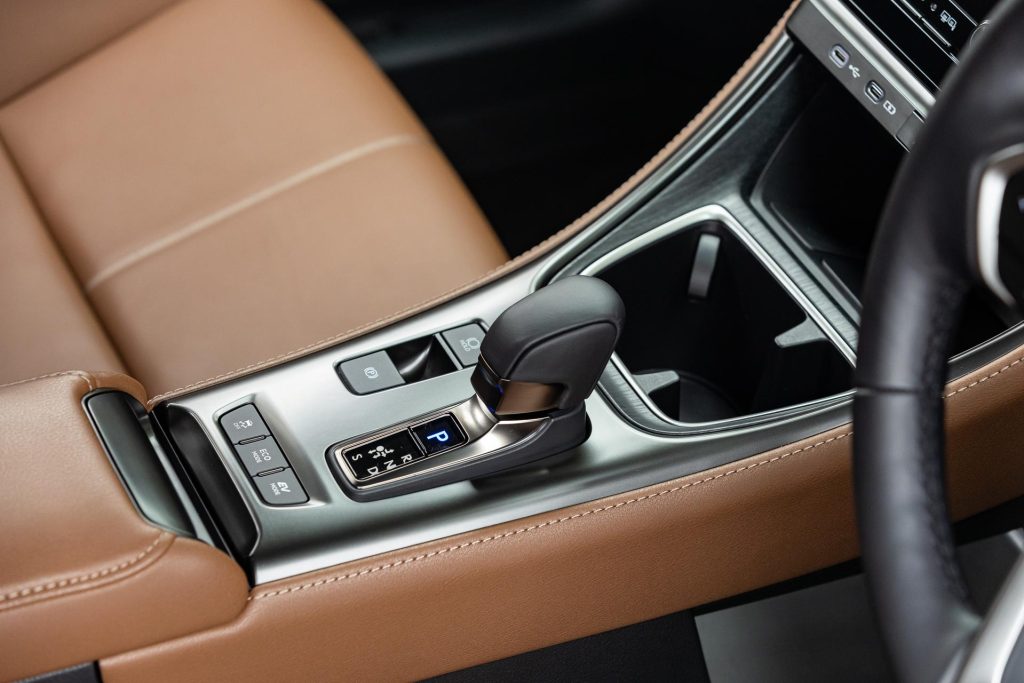
How does this compare then? A lot of other stuff, most everything really, around this price point offers more power and performance but is not as frugal.
You can buy 208s and 308s for less too, with more performance and space but they don’t have quite the look of this.
And of course you can always pay a swag less and buy the Yaris Cross which is itself a handy wee thing, if not quite the looker this is, nor with the spec level.
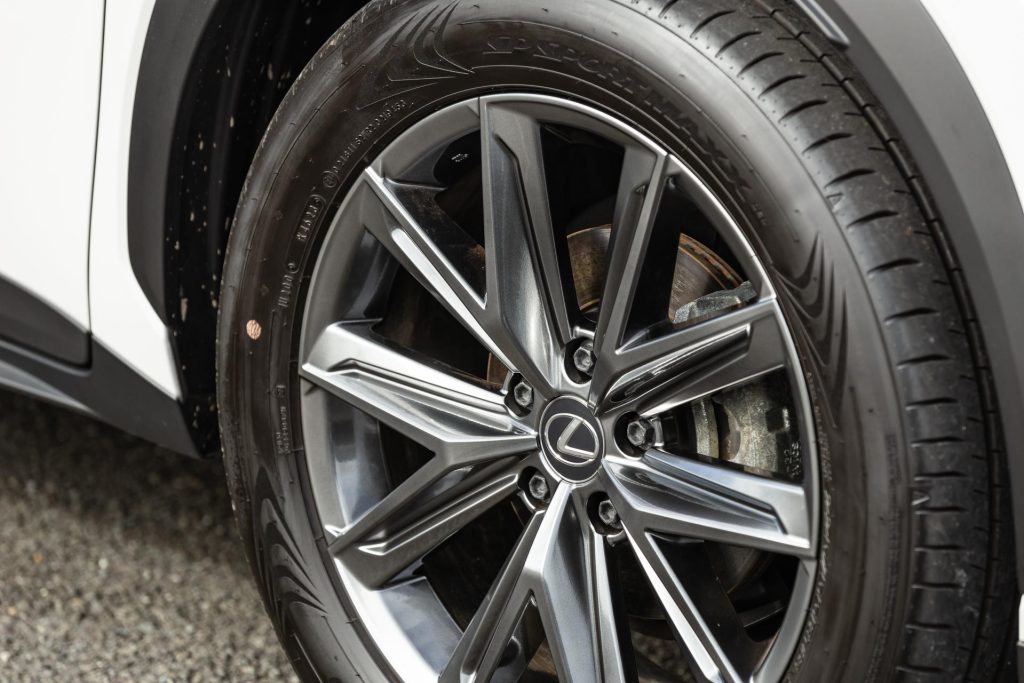
Or you can wait and hang out for the Lexus LBX Morizo RR, designed and tweaked by Mr Toyoda himself. The RR stands for Rookie Racing.
This is the polar opposite of a fuel miser, packing a 206kW/390Nm 1.6-litre inline-three intercooled turbo engine.
It is Mr Toyoda’s weekend drive. This monstering wee AWD rocket is honed for performance, lowered, widened, stiffened and all key elements upgraded.
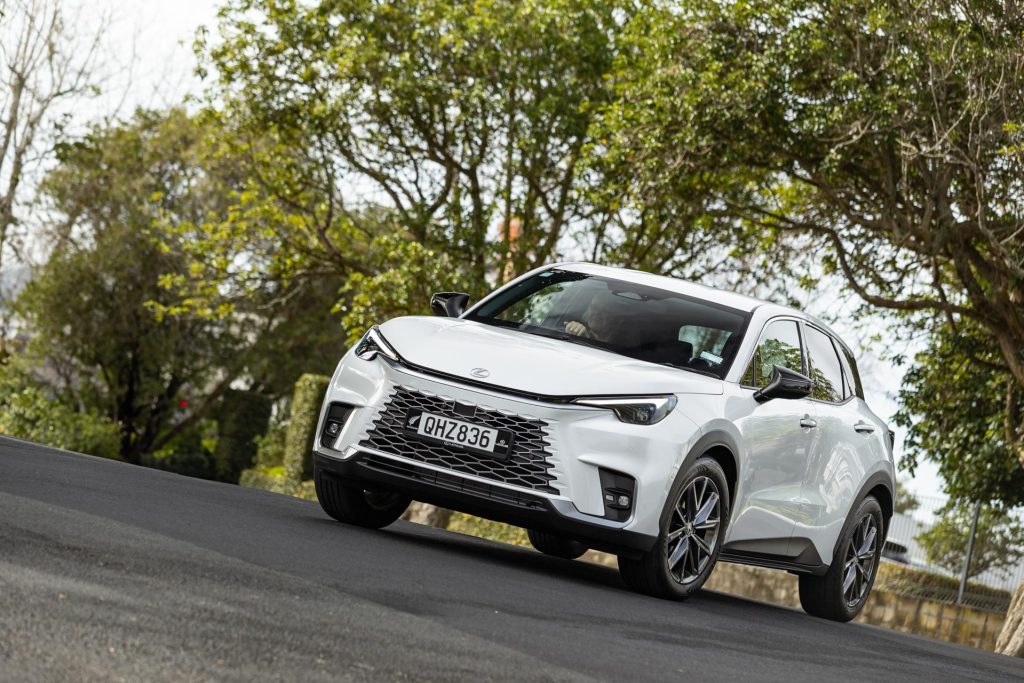
And it’s coming here early next year. WE. CAN’T. WAIT.
| Model | Lexus LBX Relax |
| Price | $65,900 |
| Engine | 1490cc, IL3, DI |
| Power | 67kW @ 5500rpm |
| Torque | 120Nm @ 3800-4800rpm |
| Motor Output | 69kW / 185Nm |
| Drivetrain | e-CVT, FWD |
| Turning circle | 10.4m (2.75 turns) |
| Fuel Use | 3.6L/100km |
| C02 Output | 84g/km |
| 0-100km/h | 9.36 sec |
| Tyre Size | f/r-255/55/R18 |
| Fuel Capacity | 36L |
| Stability systems | ABS, ESP |
| Safety | AEB, ACC, BSM, LDW, RCTA, ALK, AHB |
| Luggage Capacity | 402-994L |
| Tow rating | 400kg |
| Service intervals | 12 months/15,000km |
| Warranty | 4 years/unlimited km |
| ANCAP rating | Not yet rated |
| Weight | 1290kg (claimed) |
This article first appeared in the September 2024 issue of NZ Autocar Magazine.


